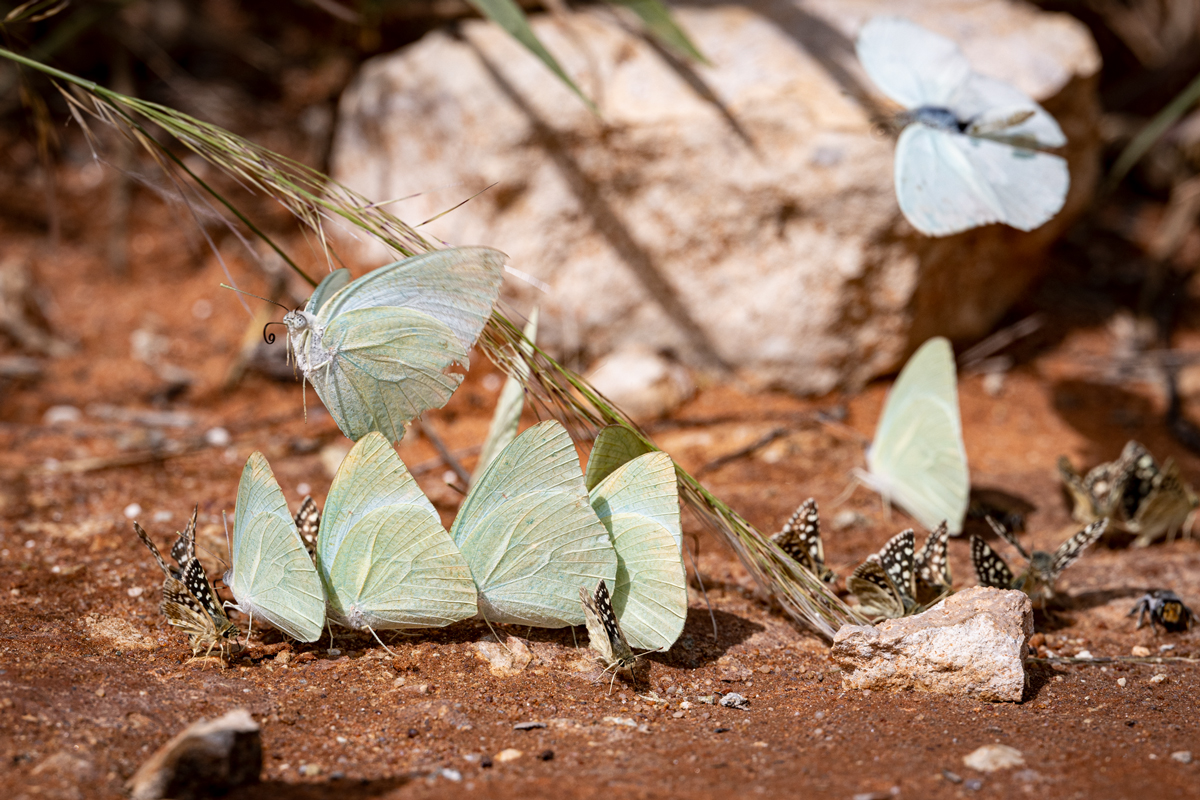Green season in the Kalahari

Having been in Tswalu during the drought we were amazed to see how green it is now. There is a bountiful abundance of green grasses, Kalahari sunflowers and butterflies. Nature seems to be catching up. After more than eight years of drought the area seems to be getting its third year of above average rainfall. Dormant seeds started to grow again and plants which had not been seen for many years reappear. Plants, insects, rodents, birds, all animals seem to have gone into reproduction.
Obviously the often man high grasses result in a totally different game viewing experience. Without the amazing trackers and guides it would be near to impossible to find animals in this vast area. They know the animals, their habitats and behavior very well and are able to search for animals off road if necessary. This is quite an accomplishment in a reserve of more than 100.000 hectares. Without the armada of cars you see in other parks, some of the areas here are not frequently visited. Roads start to overgrow, especially with the grasses growing so fast. All this makes game viewing into the adventure we love.
For more than 25 years the owners of Tswalu have been working on their mission to preserve part of the Kalahari and to restore it to its original state. This has meant removing human disturbances like fences, buildings and roads. The scars take a long time to disappear in this unforgiving environment. Even in this time of plenty nature takes its time to come back. Hopefully the findings which are well researched and documented here will help us to understand how to help our planet survive human disturbances.

Climate research
The effect of climate change on this arid area is immense. Changes in rainfall and temperatures affect the survival of its inhabitants and the whole ecosystem. The many long term multidisciplanary studies which are being conducted are important to understand more about the critical factors that influence survival.

On the lookout
While the rest of the family is foraging for insects there is always one meerkat on the lookout for potential enemies, like snake eagles. One alarmcall brings them back to the burrow in no time. This group is surprisingly relaxed around humans due to the fact that researchers spend a lot of time studying them.

Butterflies everywhere
During our previous visits we did not see many butterflies, now they seem to be everywhere. Their reoccuring presence illustrates the fragility and the resilience of nature. Now the rain has come back butterflies in many colours and sizes congregate at mud puddles to drink and suck up minerals and salts.




























